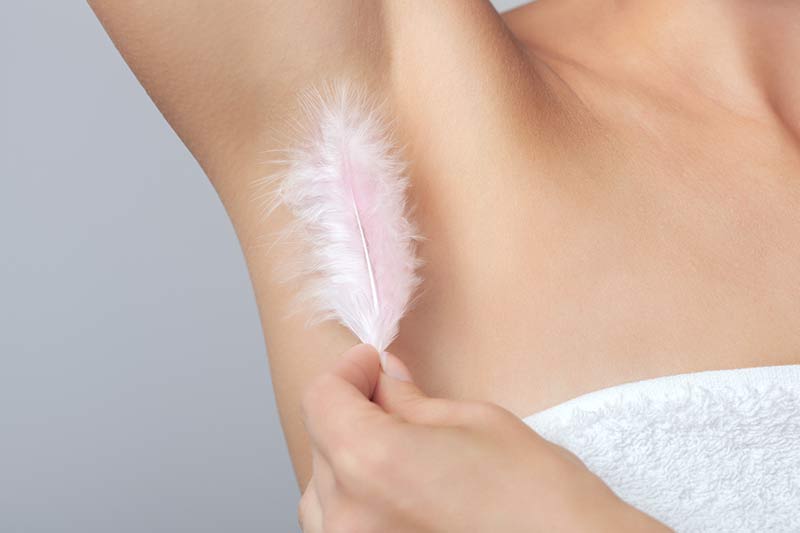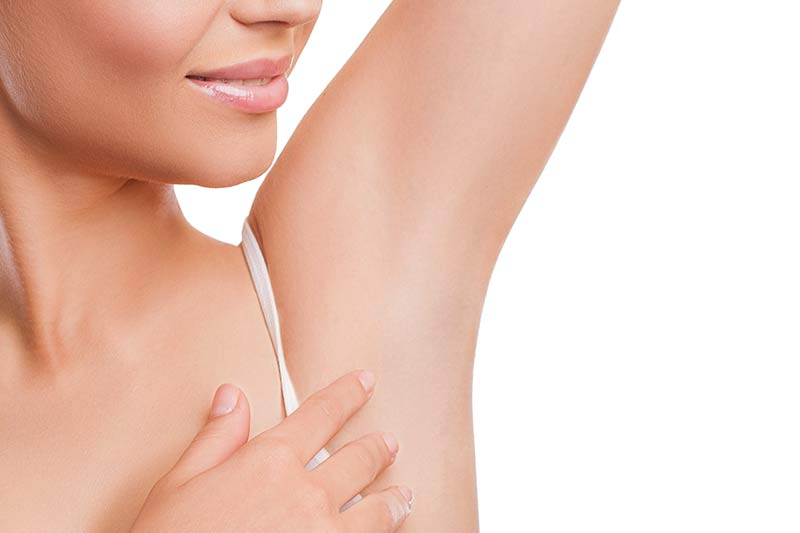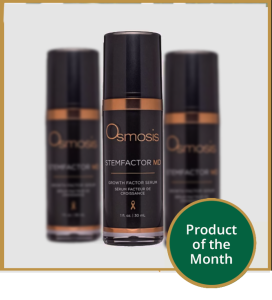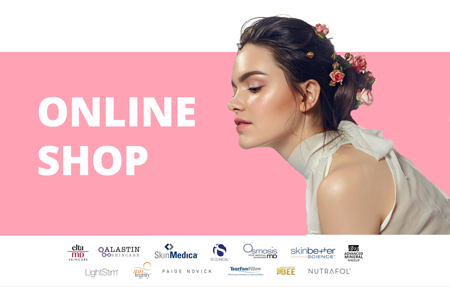Sweating is a natural process that helps the body maintain optimal temperature. However, many people suffer from hyperhidrosis or excessive sweating – a relatively common but unpleasant condition that can cause embarrassment and social anxiety. It can affect the whole body or just specific areas, most commonly the armpits, hands, feet, and the face.
The first line of treatment includes prescription antiperspirants and oral medications. If that doesn’t help, patients can try Botox. Widely popular as a cosmetic treatment for wrinkles, Botox is less known for its use in medicine.
This article explains how Botox can help with excessive sweating in the armpits (axillary hyperhidrosis) and what results to expect.

How Botox in the Armpits Works?
Botox is an injection containing a small amount of the Botulinum toxin. When injected in the armpits, it temporarily inhibits the release of the neurotransmitter acetylcholine, which signals the sweat glands to produce sweat. The result is minimized or even complete cessation of sweating in those areas where Botox is injected.
Botox for sweating is injected into the sweat glands in the underarm area. Here, Botox intercepts the message telling the glands to secrete sweat. Receiving no signal, the area stays dry.
The Benefits of Botox in the Armpits
Botox in the armpits offers several benefits:
1. FDA-Approved
The FDA approved Botox for sweating in the armpits in 2004 and, as of now, it is the only approved area for this procedure. Though doctors perform off-label treatments in other areas with excessive sweating (e.g., palms, feet, forehead), the most studies on safety and effectiveness have been conducted on Botox in the armpits.
2. Effective
Studies show Botox significantly decreases sweating in patients with axillary hyperhidrosis – up to 87%.
3. Non-surgical
Botox is a non-surgical procedure and does not carry the risk of more severe side effects, such as a reaction to anesthesia, nerve damage, and long recovery.
4. Relatively Painless
Botox in the armpits is a relatively painless procedure compared to Botox in the palms of the hands and especially the feet. In most cases, medical providers use numbing agents to ensure no pain during the treatment.
5. No Downtime
Patients who get Botox in the armpits can go back to work or continue with other daily activities right after the treatment. Doctors recommend refraining from strenuous exercise for 24 hours.
Who Is a Good Candidate for Botox in the Armpits?
To get Botox for hyperhidrosis, you need to be at least 18, and you should have tried other methods for fighting excessive sweating. If you tried sweat-proof clothing and prescription antiperspirants to no avail, you are a good candidate for Botox injections.
However, you should not get Botox if you are pregnant or breastfeeding, or if you have a neuromuscular disorder such as ALS. Also, Botox for excessive sweating is not suitable for people allergic to any of its ingredients or who have a skin infection at the site of the injection.
How to Prepare for Botox in the Armpits?
Botox providers usually ask patients not to shave for one to two days before the appointment. They may also advise discontinuing the use of blood thinners for a few days, if medically possible. This is a common request for any Botulinum toxin procedure, and it is meant to prevent bruising.
Note: Find out more tips and tricks on how to prepare for Botox to ensure optimal results.
What Can You Expect During the Botox in the Armpits Procedure?
The medical provider first assesses the area and marks where they will inject Botox. They may use a topical anesthetic, such as a numbing cream. Then, they clean the area and make injections with a tiny needle.
Patients may feel slight discomfort or a sensation similar to a rubber band snapping against the skin, but no pain.
The entire process takes about half an hour.
The Results of Botox in the Armpits

Patients usually see an improvement in their condition within several days, and full results appear after two weeks.
Around that time, the patient should return to the clinic for a follow-up appointment, where the injector can perform any “touch-ups” of missed spots.
The dryness usually lasts six to twelve months, and then it is time for another treatment. Patients who continue with the treatments may go longer between sessions over time. Note, however, that exercise and stress accelerate the body’s metabolic response to Botox, breaking it down faster.
How Many Units of Botox for Underarms Are Needed?
The amount of Botox for the procedure depends on how profusely the patient sweats and whether they had Botox before. It usually takes around 50 units of Botox per armpit.
Does Botox in the Armpits Stop the Smell?
While Botox dramatically decreases sweating, the odor will probably stay. The armpits contain apocrine sweat glands that contribute to body odor. They will be mostly dry, but you may still have to use a deodorant. The smell lingers even with minimal or no sweat as it is bacterial or chemical in origin.
Botox in the Armpits Aftercare
Medical providers advise patients to follow these Botox aftercare tips to maximize the results:
- Refrain from strenuous exercise for 24 hours.
- Don’t bathe and shower for at least 12 hours.
- Avoid products with perfume for 24 hours.
Is It Safe to Get Botox in the Armpits?
Botox for axillary hyperhidrosis is FDA approved, but like any drug, it can exhibit side effects.
You should inform your injector about any medication, vitamins, and supplements you are taking. They should also know if you received Botox or another Botulinum toxin product in the past several months. This information will minimize the risk of adverse effects.
Underarm Botox Side Effects
Even though side effects from Botox for sweating are rare, they can happen. When they occur, they are usually minimal, and people handle them well. The most common side effects are pain and/or bruising at the injection site, and they can be treated with over-the-counter medication.
More severe side effects from Botox include:
- Problems swallowing
- Difficulty speaking
- Difficulty breathing
- Muscle tiredness or weakness
- Vision problems
- Allergic reactions such as rash, itching, dizziness
- Loss of bladder control
- Headaches
- Neck pain
Contact your medical provider immediately if you experience any of these symptoms.
Can Botox in the Armpits Cause Cancer?
No studies have shown a link between Botox and cancer. The injections act locally without affecting the cells, so they can’t cause any damage to the cells’ DNA that may lead to cancer. The FDA approval is a strong indicator of the treatment’s safety.
How Much Does Botox in the Armpits Cost?
At Vibrant Skin Bar, one unit of Botox costs $13.50. People usually require about 100 units for both armpits, so the cost of the treatment amounts to $1350. Results typically last 6-12 months.
The benefit of having the injections in a clinic such as Vibrant Skin Bar is that your injectors are certified medical professionals with vast experience who use the right amount of product, thus minimizing potential risks and side effects.
Conclusion
For people who suffer from excessive sweating, Botox in the armpits can be a lifesaver. Repeated treatments are safe and effective, and often result in a significant decrease in symptoms and an improved quality of life.




